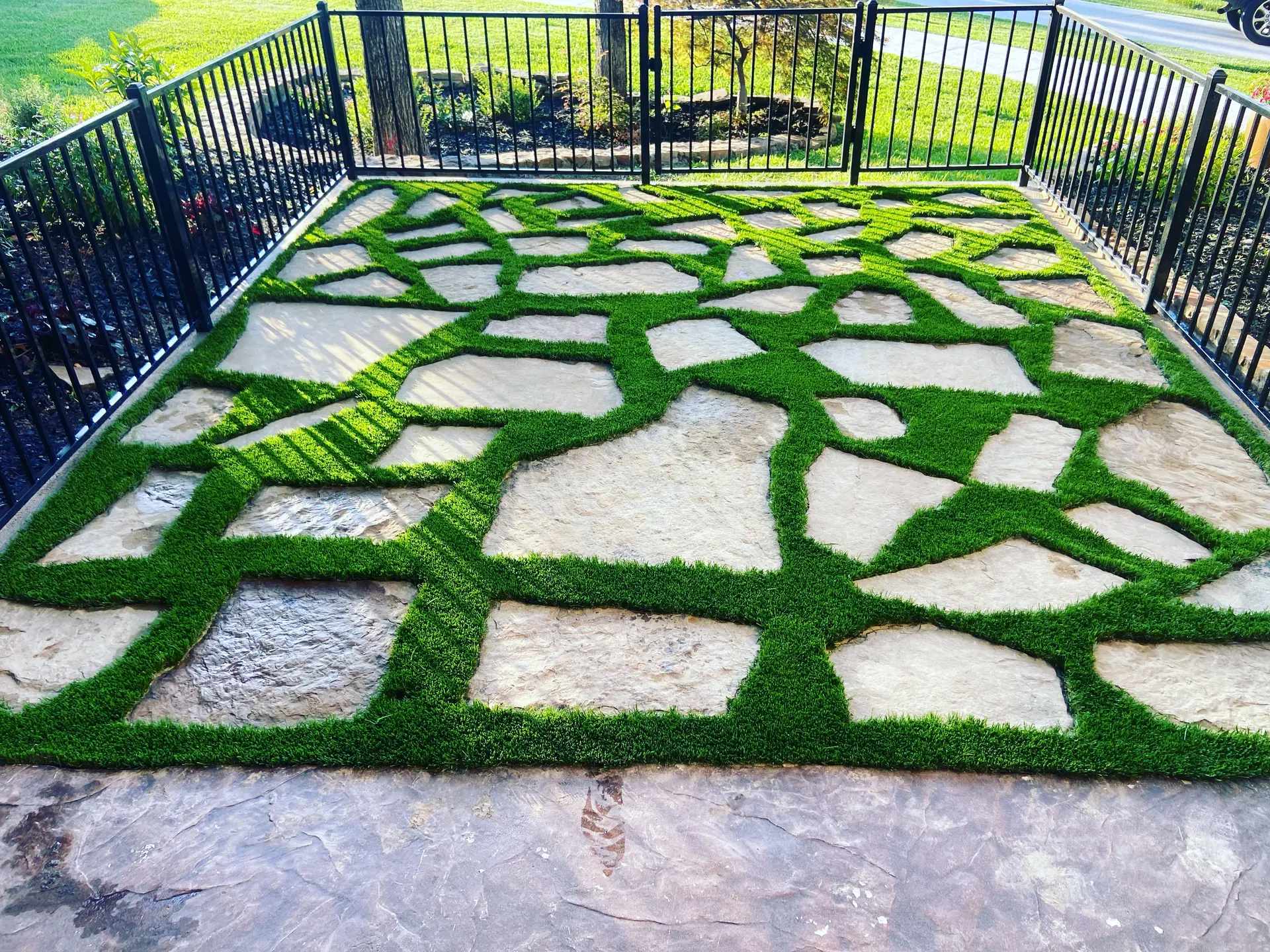
Introduction to Water Conservation in Urban Landscapes
Urban landscapes play a vital role in improving the quality of life for city residents, offering recreational spaces, aesthetic value, and environmental benefits. However, maintaining these green spaces entails significant water use, especially in regions facing water scarcity. As cities grow and climate patterns shift, water conservation has become a critical concern for urban planners and residents alike. This chapter outlines the importance of water conservation in urban landscapes, setting the stage for a detailed comparison between natural turf grass and artificial turf in subsequent chapters.
Water conservation in urban environments is essential for several reasons. Firstly, it helps ensure a sustainable supply of water for future generations. According to the United Nations, by 2025, nearly two-thirds of the world’s population could be living under water-stressed conditions. Secondly, conserving water can lead to substantial cost savings for municipalities and residents, reducing the financial burden associated with water procurement and distribution. Lastly, efficient water use supports the health of local ecosystems, helping to maintain biodiversity and mitigate the impacts of climate change.
Key Factors in Urban Water Conservation
Several factors influence water conservation efforts in urban landscapes:
- Climate: The local climate significantly impacts the amount of water required to maintain green spaces. Regions with arid or semi-arid climates will naturally demand more water for landscaping purposes.
- Population Density: Higher population densities increase the demand for recreational and aesthetic green spaces, which can lead to increased water usage.
- Infrastructure: Effective water management infrastructure, including irrigation systems and recycled water facilities, can considerably improve water conservation efforts.
- Policy and Regulation: Local policies and regulations play a crucial role in guiding water conservation practices. Incentives for water-saving technologies and restrictions on water use can drive more efficient practices.
- Public Awareness: Educating the public about the importance of water conservation and encouraging responsible water use can enhance overall conservation efforts.
Comparing Water Conservation Tools
In urban landscapes, two primary tools are often evaluated for their water conservation potential: natural turf grass and artificial turf. Each offers unique benefits and challenges with regard to water usage, environmental impact, and long-term sustainability. A comparative understanding of these tools can help urban planners and stakeholders make informed decisions.
| Factor | Details |
|---|---|
| Total Water Use | Varies significantly between natural and artificial options |
| Maintenance Requirements | Natural grass often requires regular watering, mowing, and fertilizing, while artificial turf needs occasional cleaning and infill replenishment |
By examining these factors, this article aims to offer a comprehensive comparison between natural turf grass and artificial turf, particularly in the context of their water conservation benefits.
Overview: Natural Turf Grass and Artificial Turf
Natural turf grass and artificial turf are two prevalent options for urban landscapes, and each comes with its own set of characteristics that influence water conservation.
Natural Turf Grass
Natural turf grass, commonly used in lawns, parks, and sports fields, is composed of live grass species that require ongoing maintenance. Key species include Kentucky Bluegrass, Fescues, and Bermuda grass, each with unique water needs, growth rates, and climate adaptability.
Natural turf grass provides several ecological benefits such as carbon sequestration, soil stabilization, and temperature regulation. It absorbs rainwater, reduces runoff, and helps recharge groundwater. However, maintaining healthy turf involves regular watering, mowing, fertilization, and pest control.
Artificial Turf
Artificial turf, designed to mimic the appearance of natural grass, is made from synthetic materials such as polyethylene or polypropylene. Its use has grown in urban landscapes due to its durability and lower maintenance requirements.
Artificial turf does not require regular watering, mowing, or fertilization, making it an attractive option for areas facing water scarcity. Advances in technology have also improved its draining capacity and reduced heat retention, addressing some of its earlier criticisms. However, it lacks the ecological benefits of natural turf such as organic matter contributions and support for biodiversity.
The following table summarizes the basic characteristics of natural turf grass and artificial turf:
| Feature | Natural Turf Grass | Artificial Turf |
|---|---|---|
| Water Requirements | High | None |
| Maintenance | Frequent | Minimal |
| Environmental Benefits | Yes | No |
| Installation Cost | Low | High |
| Longevity | Variable | 10-15 years |
In summary, the choice between natural turf grass and artificial turf in urban landscapes depends on various factors including water availability, maintenance capabilities, initial investment, and desired environmental benefits. Each option offers distinct advantages and challenges impacting water conservation efforts. Subsequent chapters will delve deeper into their specific water usage patterns and overall environmental implications.
Water Usage in Natural Turf Grass
Natural turf grass requires a substantial amount of water to maintain its health and appearance, especially in urban landscapes where environmental conditions may not be ideal. According to the Environmental Protection Agency (EPA), landscape irrigation accounts for nearly one-third of all residential water use, totaling nearly 9 billion gallons per day in the United States. A significant portion of this is attributed to watering natural turf grass.
On average, irrigated turf grass requires about 1 to 1.5 inches of water per week to remain green and healthy, which translates to approximately 623 to 935 gallons of water per 1,000 square feet. This requirement can vary based on several factors, including grass species, soil type, climate, and local weather conditions.
Grass Species: Different grass species have varied water needs. For instance, cool-season grasses such as Kentucky bluegrass and fescue generally require more water than warm-season grasses like Bermuda grass and Zoysia.
- Kentucky bluegrass: 1.2 inches per week
- Bermuda grass: 0.5 to 0.75 inches per week
- Zoysia: 0.5 inches per week
Soil Types: Soil composition affects water retention and drainage. Sandy soils drain quickly and require more frequent watering, while clay soils retain water longer, reducing the frequency but not necessarily the total amount of water needed.
- Sandy soil: frequent, shallow watering
- Clay soil: less frequent, deep watering
- Loamy soil: balanced watering schedule
Climate: Regions with high temperatures, low humidity, and high winds increase evapotranspiration rates, thus increasing water requirements for natural turf. Conversely, cooler and more humid climates may reduce the need for supplemental watering.
In response to the growing concerns about water conservation, some municipalities have implemented restrictions on lawn watering to conserve water resources. These restrictions often include limits on the days and times watering is allowed, as well as guidelines on acceptable watering practices.
Additionally, advances in irrigation technology can help reduce water usage. Smart irrigation systems, which use weather data and soil moisture sensors to adjust watering schedules, can significantly decrease water consumption by only irrigating when necessary.
Native and drought-tolerant grass species are also gaining popularity for their lower water requirements. While they may not provide the same aesthetic as traditional turf grass, these species can survive and even thrive in the dry conditions often found in urban settings.
In conclusion, while natural turf grass has significant water needs, understanding and implementing efficient watering practices, selecting appropriate grass species, and utilizing advanced irrigation technologies can help mitigate water use in urban landscapes.
Water Usage in Artificial Turf
Artificial turf has gained popularity in urban landscapes primarily due to its potential to reduce water usage. Unlike natural turf grass, artificial turf does not require regular irrigation, making it an attractive alternative for regions facing water scarcity. This chapter examines the specific water usage associated with artificial turf and explores the various factors that contribute to its water conservation benefits.
Water Usage During Installation
Although artificial turf significantly reduces water consumption during its lifespan, the installation process does involve some initial water use. This includes the need for water to compact and stabilize the base materials, which typically consist of layers of crushed stone and sand. However, this initial water use is a one-time requirement and is minimal compared to the ongoing irrigation needs of natural turf grass.
Maintenance Requirements
Once installed, artificial turf requires very little water. Regular maintenance activities such as rinsing to remove dirt and debris can demand some water, but this is typically minor. For instance, in high-traffic areas or regions with heavy dust, occasional rinsing may be necessary. Nonetheless, this maintenance water use is negligible compared to the substantial quantities required for irrigating natural turf.
Impact on Water Savings
The most significant water conservation benefit of artificial turf lies in its drastic reduction in daily and seasonal irrigation requirements. Studies have shown that natural turf grass can consume an average of 25 to 50 inches of water annually, depending on climate conditions. In contrast, artificial turf can save tens of thousands of gallons of water per year, which is particularly beneficial in water-stressed areas.
Indirect Water Savings
Beyond direct water usage, artificial turf contributes to water conservation indirectly by reducing the need for traditional lawn care activities. For example, natural turf grass often requires fertilizers and pesticides, which can lead to water usage for application and increase the potential for runoff and water pollution. Artificial turf eliminates this need, further supporting water conservation efforts.
Conclusion
In summary, artificial turf provides significant water conservation advantages in urban landscapes primarily due to its minimal water requirements post-installation. While the initial installation process does involve some water usage, the long-term benefits in reduced irrigation needs and maintenance requirements make artificial turf a viable option for water-saving initiatives.
Economic Implications of Water Use
When evaluating the economic implications of water use, both natural turf grass and artificial turf present distinct financial profiles. The costs associated with each option can vary significantly depending on installation, maintenance, and water usage over time.
Installation Costs
The initial installation costs for natural turf grass typically include soil preparation, seeding or sodding, and irrigation system setup. According to a study by the University of California, the cost to establish a natural lawn ranges from $0.50 to $4.00 per square foot.
In contrast, artificial turf usually incurs a higher upfront cost, reflecting the advanced manufacturing and material quality required. Industry reports indicate that the installation of artificial turf can range from $5 to $20 per square foot, depending on the product grade and installation complexity.
Maintenance Expenses
Over time, maintenance costs for natural turf grass can add up. These costs include watering, mowing, fertilizing, pest control, and potentially re-seeding areas. The Lawn Institute estimates that annual maintenance expenses for a natural turf lawn can range from $300 to $500 per 1,000 square feet.
Artificial turf, on the other hand, requires minimal upkeep. The primary maintenance tasks include periodic brushing to maintain fiber uprightness, the addition of infill material as needed, and cleaning to remove debris. Annual maintenance for artificial turf is generally much lower, often estimated at $50 to $100 per 1,000 square feet.
Water Usage Costs
Natural turf grass demands consistent watering, especially in arid and semi-arid climates. According to the Environmental Protection Agency (EPA), outdoor water use can account for up to 30% of total household water consumption, with a significant portion dedicated to lawns. Over a year, this can translate to considerable costs, particularly in regions with high water prices.
Artificial turf does not require watering, presenting substantial long-term savings in water costs. The absence of a need for irrigation reduces water bills and contributes to overall economic efficiency.
Cost Over Time
When comparing the long-term economic implications, it is essential to consider the cumulative costs over several years. While natural turf grass may be cheaper to install initially, the ongoing maintenance and water expenses can cumulatively exceed the initial savings. Conversely, despite the higher upfront cost, artificial turf’s reduced maintenance and zero water use can result in lower total expenditure over time. A study by Oregon State University found that over a 10-year period, artificial turf could save homeowners between $2,000 and $3,000 in maintenance and water costs compared to natural turf grass.
Return on Investment (ROI)
The ROI for natural turf grass is influenced by its role in enhancing property aesthetics and potential benefits such as cooler outdoor temperatures. However, weighing these against the continuing costs is crucial.
Artificial turf may offer a more predictable and potentially faster ROI, particularly in regions with high water costs or stringent water usage regulations. The savings from reduced water bills and maintenance can offset the initial higher investment within several years, presenting a compelling case for its economic viability.
Ultimately, the choice between natural turf grass and artificial turf involves evaluating both immediate and long-term economic implications, guided by factors such as local water costs, climate, and desired lawn aesthetics.
Environmental Impact and Sustainability
When it comes to the environmental impact and sustainability of natural turf grass versus artificial turf, multiple factors must be considered, ranging from carbon footprints to ecosystem effects. Each option offers distinct advantages and drawbacks in terms of environmental impact.
Natural Turf Grass has several environmental benefits. It provides oxygen production, carbon sequestration, and serves as a habitat for various organisms. Grass is known to act as a carbon sink, absorbing carbon dioxide from the atmosphere. According to the Environmental Protection Agency (EPA), an average lawn can sequester about 20 to 27 kilograms of carbon per year. Additionally, natural turf assists in reducing the urban heat island effect by cooling the air through evapotranspiration.
Moreover, natural turf promotes biodiversity, supporting a range of insects, birds, and other small wildlife. Organic matter from grass clippings can enrich soil, enhancing its fertility and structure. However, these benefits come at a cost. The need for regular irrigation, fertilization, and pesticide application can negate some of these environmental positives. Over-application of fertilizers and pesticides can lead to water pollution through runoff, harming aquatic ecosystems.
Artificial Turf, on the other hand, offers a different set of environmental impacts. The primary benefit of artificial turf is its minimal water requirement. Once installed, it needs no irrigation, significantly reducing water consumption in urban areas. This aspect alone makes it highly appealing in regions facing water scarcity.
However, there are concerns about the environmental footprint of artificial turf. The production and disposal of artificial turf involve substantial energy and resources. Most artificial turfs are made from non-biodegradable materials such as polyethylene, polypropylene, and latex, all derived from fossil fuels. Manufacturing these materials contributes to greenhouse gas emissions. The Environmental Science & Technology Journal highlighted that synthetic turf fields could contribute nearly 55.6 metric tons of CO2 equivalent emissions during their lifecycle, depending on various factors like usage and maintenance.
Artificial turf also affects local ecosystems differently than natural grass. While it requires less pesticide and fertilizer, it offers no habitat for wildlife and can lead to soil degradation under the turf. Another concern is the heat retention of artificial turf, which can become significantly warmer than natural grass, contributing to higher local temperatures which may affect urban microclimates.
In summary, both natural turf grass and artificial turf have clear environmental advantages and disadvantages. Natural turf grass supports carbon sequestration and biodiversity but demands significant water and chemical input. Artificial turf conserves water and reduces chemical usage but involves high carbon emissions during production and disposal, and lacks ecological benefits for wildlife.
Conclusion and Recommendations
After exploring the various facets of water usage, economic implications, and environmental impact associated with both natural turf grass and artificial turf, it becomes evident that each option presents a unique set of benefits and challenges when considering water conservation in urban landscapes.
Natural turf grass, despite its environmental benefits such as carbon sequestration and supporting biodiversity, necessitates substantial water usage. Depending on the grass type and climate, natural turf can require up to 2 inches of water per week during the growing season to maintain its health and aesthetic. This can add up to several thousand gallons of water annually for a median-sized lawn.
Conversely, artificial turf significantly reduces water consumption, potentially down to zero in regions that do not require any form of maintenance or cooling for the synthetic material. This makes it particularly advantageous in areas facing severe water scarcity. However, it is crucial to acknowledge the environmental footprint during its production and eventual disposal, as artificial turf often incorporates non-biodegradable materials.
The decision to install natural versus artificial turf should be informed by the specific water availability and environmental goals of the urban region in question. For cities facing critical drought conditions, the water conservation benefits of artificial turf are immediate and substantial. However, for areas with adequate water resources and a focus on sustainable landscaping, natural turf may present a more balanced ecological solution.
It is also important to consider blended landscaping approaches that can optimize water conservation. For example, integrating drought-resistant natural grasses with artificial turf in less-trafficked areas can provide a compromise solution that benefits from both systems.
- Natural Turf Grass: High water usage, environmentally friendly, supports biodiversity
- Artificial Turf: Low water usage, higher environmental impact during production and disposal
The following table summarizes the key aspects of water conservation related to natural and artificial turf:
| Factor | Natural Turf Grass | Artificial Turf |
|---|---|---|
| Water Usage | High | Low |
| Environmental Impact | Positive (with concerns) | Variable (mostly negative during production) |
| Maintenance | Requires regular watering, mowing, fertilizing | Minimal maintenance, no watering needed |
Ultimately, the choice between natural turf grass and artificial turf should be aligned with local environmental policies, water availability, and long-term sustainability goals. Further stakeholder engagement and community education on the implications of each option can foster informed decision-making and optimized urban water conservation strategies.



